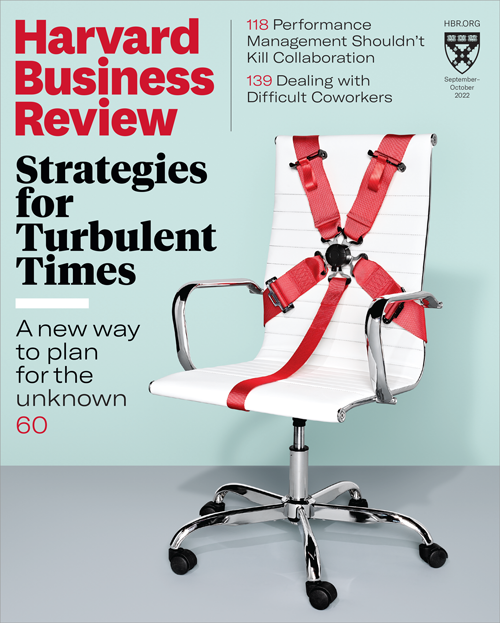Being in a rapidly growing energy/tech startup creates a requirement to see the rapid transformation of the business in terms of long-term plans, strategy building, process designs in a very fast-based. My interest and relevant skill set valuable for contributing to this growth process give me opportunity to be an an active part of it, both collaborating with C-suite executies as well as my group members. One of the most important thing to consider in these cases is “strategy-making” which maybe defined as “thinking about actions in advance, in light of our goals and our capacities.” (L. Freedman, Strategy - A History, Oxford Press) This month’s Harvard Business Review Magazine cover story “Strategy Making in Turbulent Times” by two senior consultants from Bain gives a new perspective that would be required for our uncertain and turbulent world for the business to cope with.

The authors starts to give the reasons that would require such a new approach to strategy making, mainly the drivers of uncertainty as the complexity of the world and the interaction of change vectors that affects the business decisions. Inefficiency of the forecast for “steady state” of any process and the time required to get there is also another major challange. Thus they propose to have a more continous and “dynamic” game plan to steer this uncertainty to create and sustain an edge for a business.
They provide 5 main steps to achive it.
1 - Define Extreme but Plausable Scenarios > “Breakthrough insights come from examining what we call extreme but plausable scenarios
This involves for campanies to create exreme plausible scenarios as opposed to most-likely ones to adapt to abrupt changes in the conditions. These will provide potential “no-regret” moves that would benefit the business if the scenarios hold. They give an example of an energy investment company CMS, creating four extreme plausible scenarios for the future, namely “deregulation of electricity market”, “elimination of hub-and-spoke”, “decarbonization”, “abundant gas” which were exterme at the time but as time tells us they almost all have been realized giving the company to take agile-decisions around them.
2 - Identify Strategic Hedges and Options > Leaders can incorporate the value of flexibility - in the form of hedges and options into their strategic decision making.
Just like a financial option, the business might create these options to excersise in the future if it is valuable to do so. This involves mainly taking bets that would deliver leverage if conditions in favour.
3 - Run Experiments Beffore Locking in Investment They present experiments as a way of innovation giving the example of Amazon’s AWS, Prime and Marketplace experiments.
Leaders should set concrete guidelines for where they choose to experiment, becouse running many experiments can quickly degenerate into placing many small-bets.
Correctly applied, experiments prove the viability of big bets.
4 -Identify Trigger Points, Signposts and Metrics Authors argue that it is crucial to identify tell-tale signs that would bring competetive advantage and give way to harness the flexibility embedded in the company strategy.
By thinking through potential course changes in advance, leaders could exercise their options to best effect.
Strategy must respond to unanticipated changes in market and competitive conditions. Accordingly, when those conditions abruptly change, leaders must quickly revise the trigger points and signposts they are tracking, following the same process they used to establish the initial metrics.
5 - Provide Prescriptive Surveillance Most companies hold regular meetings to discuss the current status and what have been achived so far, but the authors liken these to “whether reporting”, mostly stating the obvious. They emphasise that the central question not to be “How did we perform? Instead it must be “Should we alter course?”
This course-correcting strategy resonates with me alot personally; I regard most of my decision making processes as such be it in work or on life matters in general. There is an inherent constant feedback and its processing gives way to alter course if needed before you encounter big obstacles or unwanted remedies.
All in all, the article provides a dynamic approach to strategy making in our ever-changing uncertain world and companies trying to survive in it. It would be good to finish with the authors’ finishing lines as:
Companies that move quickly to adopt the more dynamic approach we have set out willl pull ahead - and stay ahead - in the coming decades. Those that stick with their “plan then do” ways risk failing irreparably behind.